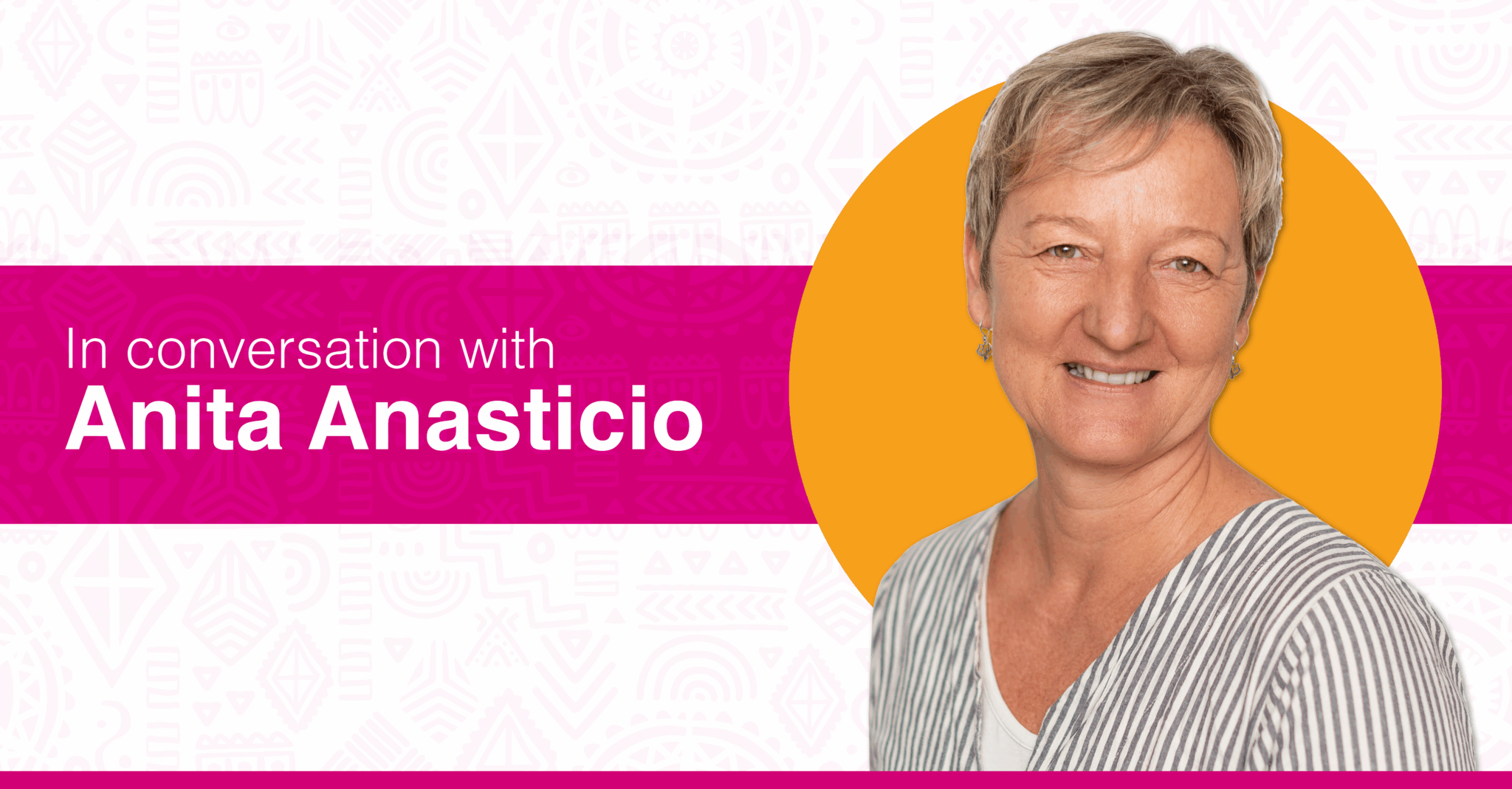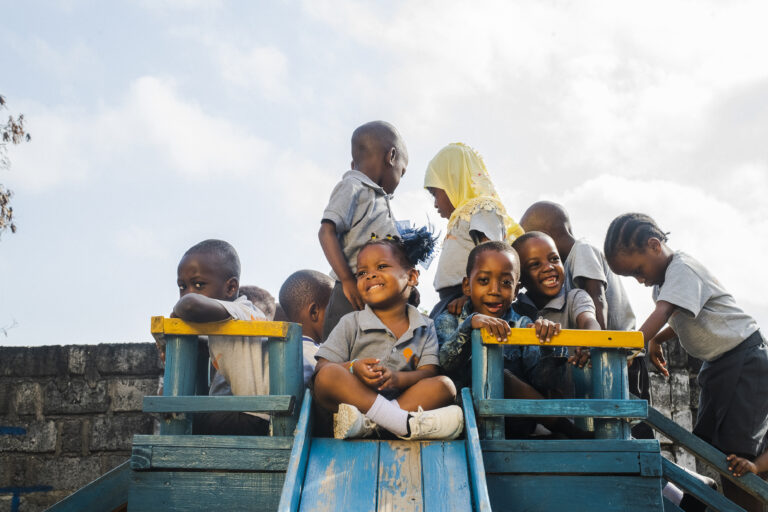Anita Anastacio on the power of early childhood and education at BRAC
Anita Anastacio, Director of Early Childhood Development and Education at BRAC International, shares her insights on why play is so important for young children to learn.

By BRAC International
This piece was originally published on BRAC International. It has been reposted here.
Anita Anastacio joined BRAC International as Director of the Early Childhood Development and Education in August 2024. She brings nearly three decades of experience in the field— working extensively in diverse humanitarian and development contexts as an advisor and advocate dedicated to reshaping early childhood development and education programs. A German by nationality, she has lived and worked across countries in Africa, the Americas and Asia—including Afghanistan, Mozambique, East Timor, the United States, Denmark, and Zambia.
As concerns over global funding cuts grow, the communications team at BRAC International sat down with Anita, who shared insights on investing in early childhood education, especially in conflict-affected and underserved regions. She also discusses the importance of creating opportunities for lifelong learning—starting right from early childhood.
Every child deserves to play and learn.
Q. Your experience in early childhood development and education spans multiple contexts, including humanitarian settings. And now with BRAC, you will be working across countries in Asia and Africa—each with their own unique contexts and sensitivities. What excites you about this role?
Anita: What really excites me is the chance to contribute to something that feels both deeply personal and professionally aligned. I’ve worked in many contexts where early learning opportunities are scarce, and yet the resilience and potential of children and families shine through. This role with BRAC allows me to work alongside dedicated teams across Asia and Africa—supporting solutions that are grounded in communities but also backed by global learning and evidence.
I am encouraged by the idea that together, we can help shape stronger, more equitable foundations for children, even in the most challenging environments.

Q. With regards to the early childhood and education program – where do you think we face the biggest challenge, and what kinds of solutions do you believe hold the most promise?
Anita: That’s a great question—and a tough one, because in truth, we face many interconnected challenges, and the hardest part is often knowing where to focus first.
So I think my biggest challenge is dealing with the complexity of needs and constraints we’re trying to solve for—ranging from access and equity, to quality of learning, to systemic underinvestment. In many contexts, we’re asking schools, teachers, families, and communities to do more than what the systems are currently set up to support. That’s why I believe the real challenge is prioritization—choosing the right entry points, sequencing our interventions well, and staying laser-focused on what will shift the needle most for children, especially the ones in the most marginalized conditions.
Solutions that hold the most promise, in my view, are those that are grounded in community realities, backed by evidence, and designed for scale. For example, BRAC’s play labs and community-education programs are powerful because they address not just learning, but also healing, identity, and belonging. That holistic approach—one that connects learning with life—feels essential if we want to see children not just survive, but truly thrive.
Q. On that note, how can we continue our work at a time when we are seeing a scaling back of human rights and funding in the development sector?
Anita: We are indeed operating in a context where funding for development is increasingly constrained, and where rights, especially those of women and girls, are being questioned or even rolled back. And yet, this is exactly why we must continue and deepen our work.
At an organizational level, BRAC remains committed to investing in the lives of people who are often excluded—particularly women and girls. Rights and dignity aren’t optional, they are foundational to development that is just and lasting.
One of the ways we’re responding to this challenging environment is by investing in integrated, multi-generational approaches. In places like Uganda and Sierra Leone, for instance, we are taking a two-generation approach that recognizes that improving a child’s life also means investing in the adults who care for them. When caregivers have access to decent livelihoods, understand the importance of early learning and nutrition, and have the tools to save and manage their finances, they’re better able to support their children—especially girls—to grow, learn, and thrive.
And we’re listening carefully to what women are telling us: they need reliable systems of care—community-based support for young children that allows them to work, to contribute economically, and to feel confident that their children are in safe, nurturing environments. These investments not only ease the burden of caregiving, but also lay the foundation for long-term change, from the household to the community level.
So even in a constrained landscape, we see opportunities to innovate, to work more collaboratively across sectors, and to protect and expand the gains we’ve made—because the cost of doing nothing is simply too high.
Q. How can we make sure that different needs, like education and livelihoods, are addressed together instead of in isolation?

Anita: We see education and livelihoods not as separate goals, but as mutually reinforcing pathways to long-term wellbeing—especially for girls and women. That’s why BRAC is deeply committed to integrated, community-based approaches that reflect the real lives of the people we serve.
For example, our play labs are not just early learning spaces; they also create employment opportunities for women as caregivers, facilitators, and entrepreneurs. Our youth clubs support adolescents with life skills and mentoring, while also connecting them to financial literacy and livelihood pathways. In some contexts, these youth clubs are now evolving into hubs that support girls to return to school or start small businesses with community-based support.
The key is that our models are embedded in communities—teachers, mentors, and facilitators are often recruited locally, which means they understand the needs and realities firsthand. This creates a strong foundation for layering interventions in a way that makes sense—expanding childcare so women can work, supporting parents so children can learn, and equipping adolescents with both the education and the tools to shape their futures.
We believe integration isn’t just something nice-to-have—it’s a necessity if we want to see lasting change.
Q. If you could ask for one big change to better support early childhood development, what would it be?
Anita: Start from birth, because the earliest moments shape a child’s entire future.
By age five, 90% of the brain is developed. Yet support too often comes late—not because we lack evidence, but because early childhood is still not prioritized by governments and donors. That’s despite crystal-clear research: every USD 1 invested in quality early childhood programs can yield up to USD 13 in long-term returns through better education, health, and economic outcomes.
We must act on what we already know: investing early, with families and communities at the center, gives every child the chance to thrive.
Investing in early childhood makes a big impact.
Q. You have talked about involving fathers more in parenting. How are you working towards that and how can breaking gender norms help both children and parents?
Anita: We can’t improve outcomes for young children without engaging fathers—not just as providers, but as caregivers too. In many of the places we work, parenting is still seen as the mother’s role—and many of these mothers are young and carrying that responsibility alone.
We’re working to change that by involving fathers in parenting sessions, community activities, and even the creation of learning materials for their children. But shifting mindsets takes time. That’s why we’re developing messages that speak directly to fathers, building on their role as providers, while also encouraging connection, care, and presence in their children’s lives.
When fathers are part of the journey from the start, everyone benefits—especially the children.

Q. What gives you a reason to hope that we can continue to scale and reach those at the last mile – especially in the current global aid context?
Anita: What gives me hope is twofold: the strength of the communities we work with, and the fact that organizations like BRAC have already shown that large-scale, inclusive solutions are possible.
Even in the most under-resourced and remote places, what we often refer to as the “last mile”, I’ve seen extraordinary leadership from parents, youth mentors, and local educators who are driving change with limited resources. And I’ve also seen how, when that local energy is met with the right kind of support, we can scale—effectively and sustainably. BRAC’s own history is proof of that. We’ve gone from piloting small, community-led solutions to reaching millions across countries, all while staying grounded in local realities.
Scaling now means working smarter, not just wider. It means designing with and for communities, investing in local leadership, and building systems that can adapt. Yes, the global aid environment is tough. But the demand for change hasn’t disappeared, and neither has the evidence that change at scale is absolutely within reach.
Q. What has been the most surprising thing you have learned from the families and communities you worked with?
Anita: What continues to surprise me—though by now it shouldn’t—is just how much families and communities already know and do, even in the most resource-constrained settings. We often come in with technical solutions, but the most powerful change happens when we take the time to listen and build on what already exists.
I’ve seen mothers transform their homes into informal play spaces and communities organize themselves to fill gaps that systems have left behind. The resilience is extraordinary—but what surprises me most is the generosity. People who have so little are often the ones most willing to give back and support others. It reminds me of something our founder, Sir Fazle Hasan Abed, once said:
“Poverty is not just a lack of income—it’s a lack of power. When we create the conditions for people to take charge of their own lives, change becomes not only possible, but inevitable.”
That belief is at the heart of everything I’ve learned: our role is not to direct, but to support, to listen, and to stand behind communities as they lead the way.